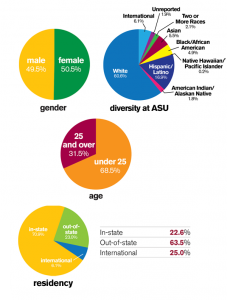Automating business processes saves time, money and Excel dependency
When Twiddy & Co. Realtors wanted to take a closer look at how much it was spending on work orders for its rental property business, Laura Carver ran into a problem. Data questions were beginning to exceed the limits of the technology at the family-owned Twiddy, which manages one of the largest portfolios of vacation homes on North Carolina's Outer Banks.
 Laura Carver
Laura Carver"We could see how many work orders we had, but we didn't know how much money we were spending on a specific type of work order," said Carver, chief technology officer at Twiddy.
The company, which works with some 1,200 vendors to maintain the vacation properties, was interested in seeing a more targeted piece of the pie: How much was it paying vendors to perform certain tasks, such as cleaning pools and hot tubs? And it also wanted to see a comparative picture: Could the company save -- or even make -- money by bringing certain types of work requests in-house?
"It was taking one person all day long to do that," Carver said. "And sometimes it would take two days."To answer the kinds of questions the business was posing, however, was anything but trivial. Managing more than 950 vacation rental properties generates thousands of work orders -- and data points -- each year. In the case of the pool and hot tub cleaning, for example, just keeping track of vendor schedules was a time-consuming process. At one point, an employee was printing out, then faxing over the schedules for each of the more than 100 pool-cleaning vendors used by the company.
Moreover, in 2010, when Carver was first asked to provide a more dynamic view of business data, that data didn't reside in a single location, and Excel spreadsheets, one of the only analytics tools at the company's disposal, couldn't turn out more than rudimentary insights. To provide better visibility into the data, Carver needed to combine data from disparate sources, as well as automate business processes, which required more than Excel.
Carver, a 26-year employee at Twiddy, was determined to find the right tools for the job. "Is there anything out there to help us work smarter and not harder? That's one of the things we always say," she said.
Working smarter, not harder turned out to be possible with the help of SAS Institute Inc.'s Business Intelligence for Midsize Companies technology. It provided more elaborate views of the data and helped Carver automate certain manual processes. What used to be an eight- to sixteen-hour task -- creating and distributing pool and hot-tub cleaning schedules, for example -- was cut down to 20 minutes.
Internal support is key to success in automating business processes
On the front end of the new platform, non-technical employees are given an easy-to-use Web-based interface to run their own reports. On the back end, the technology integrates data from different sources, giving Carver and her team a chance to build reports and other products that give a more intricate look at the data and automate processes.
To help build those reports and other back-end projects, Carver leads an internal SAS team comprising five members, one from each department within the company, who are all trained to use the software. From May through September, when tourists stream to the Outer Banks, the team "sticks to their knitting," helping to ensure that reservations, check-in procedures and maintenance run smoothly. But during the off season, Carver will gather the SAS team together on a weekly basis to work on departmental projects.
"If someone has a request for something, they email it to the SAS group, and out of the five of us, someone will create it or troubleshoot or show them what to do," Carver said.
The push by midmarket and small companies for technology in general -- and analytics in particular -- as a way to innovate, target higher-value customers and improve loyalty is happening more and more, according to a 2012 survey by Deloitte Development LLC, a professional services firm based in New York. A year later, the same survey reported that data analytics was again a top-three investment priority for SMBs, and it also suggested the technology within organizations may be maturing.
Deloitte's survey also shows that automating business processes has been a consistent, year-over-year priority for the midmarket. "Cloud computing and business automation were the most popular anticipated investments for midmarket companies, as firms look to technology solutions that could help them achieve greater efficiency and workforce productivity," the report reads.
Working even smarter
Beyond supporting the business, Twiddy's internal SAS group can also ask each other questions, learn new skills or even scrutinize how processes are working. In one case, the team built and automated a report for call record data, which now takes a matter of minutes to generate rather than hours. In another, the team discovered a billing error they were able to quickly correct.
"It probably would have been another six months before we figured that out," Carver said. "It's just the benefit of having a team doing the work instead of just an individual."














